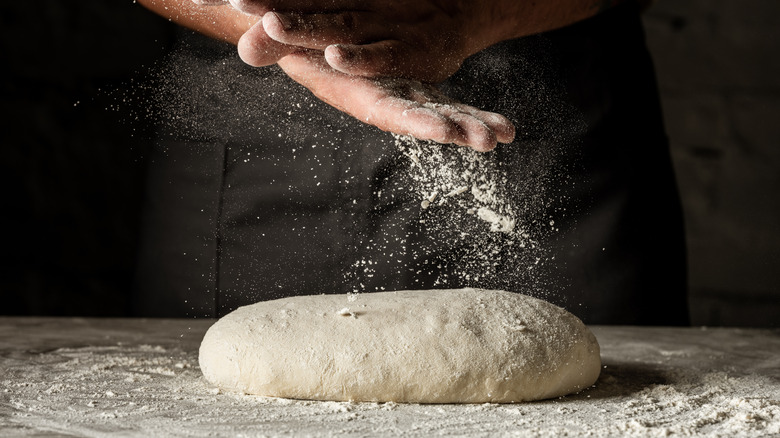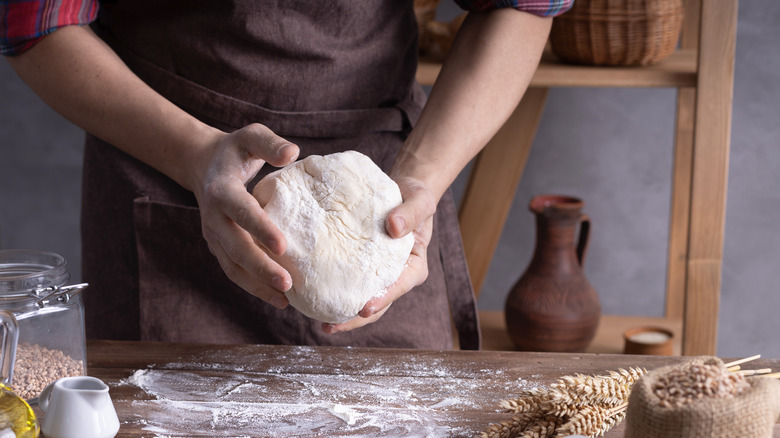How To Tell If Your Bread Dough Is Under-Kneaded
Warm, fresh bread is simply magical. Home-baked bread is the perfect base for your breakfast toast, bread pudding, or French toast. Plus, it will fill your kitchen with a warm, delicious scent. Good bread can make or break a sandwich; the fresh-baked flavor will add an element of heartiness to your meal that you may not have gotten from pre-bagged grocery store bread. Livestrong suggests baking your own bread to avoid any allergen contaminations, as the baker can control the ingredients that go into the loaf. This will help you eliminate any unnecessary preservatives, which are often present in grocery store loaves (via Healthline).
Baking your own bread can even be a great stress reliever or workout — Brain & Life says the motion of kneading dough can use upper body strength and fine motor skills to work the dough. As with any workout, it is important not to overdo it, but how do you know when your dough is ready to go?
When do you need to knead?
Kneading bread dough by hand may seem exhausting, but the process can actually keep your dough intact and bake a better loaf. Fully kneaded dough will hold its shape, look smooth, be slightly tacky when touched, and bounce back when pressed inward (via Kitchn).
The Spruce Eats warns that if your bread is under-kneaded, it will spread flat out instead of rising, and may collapse in on itself. This will be obvious when it is placed on the baking sheet; if the dough immediately starts to spread out it needs more work. Kitchn notes that under-kneaded dough will also tear more easily and have an uneven outer texture.
If your bread needs a little more help, just keep kneading! Once you think you have kneaded enough, form it into a ball and allow it to rest for 15 minutes. Check it again when the time is up, and if it has held its shape, it is good to bake! If the dough starts to spread out, keep repeating the kneading process until it holds its form.

